The iconic Golden Mile Complex, widely regarded as Singapore’s Little Thailand, has recently been sold. As a result, the numerous Thai eateries and shops have progressively started to re-locate to alternative locations.
One of the places that they’ve moved to is City Gate, across the street and a short walk away. It’s a small building and unlikely to house many of the shops making their exodus, but several Thai restaurants, beauty parlours and grocery stores have already started operations there.
So it felt kind of strange to be wandering around the place, searching for a Portuguese restaurant.
Location
We had made dinner reservations at Lusitano Restaurant, which was participating in the Spring 2023 edition of Singapore Restaurant Week. After a somewhat disappointing lunch at a local robatayaki, I had moderated my expectations.
Especially since we’d be trying out Portuguese food for the first time, and I didn’t quite know what to expect. Well, technically the second time, though I have a feeling that Portuguese pork chop buns in Macau don’t really count.
After meandering around the first floor, we finally spotted their signboard, which featured a prominent horse logo. I had assumed that Lusitano was a place in Portugal, but Google ChatGPT informed me that it was a breed of Portuguese horse instead.
So desu ne.

In typical ChatGPT fashion, it provided a few concise paragraphs with interesting snippets of information about the horse. I’m starting to understand why Google is freaking out about the future of its search engine revenue.
Lusitano is a breed of horse that originated in Portugal. The breed is known for its intelligence, strength, and agility, and has a long history in the equestrian world, particularly in the fields of dressage and bullfighting.
The Lusitano horse is known for its distinctive appearance, with a compact, muscular build and a convex profile. They come in a variety of colors, including gray, bay, chestnut, and black. The breed is known for its high level of trainability and athleticism, and is often used in equestrian sports such as dressage, show jumping, and eventing.
Lusitano horses are also often used in Portuguese bullfighting, where they demonstrate their courage and agility in the bullring. In recent years, the breed has become increasingly popular around the world, both as a sport horse and a leisure horse.Interior
Our dinner reservation was for 5.30pm and the only person we saw when we walked in was Chef Tiago Martins. He greeted us warmly, guided us to our table and laid out the menus.
We would typically ask for warm water but when he quickly poured us glasses of iced water, we didn’t have the heart to ask for a change. Because it seemed like he was running the restaurant as a one-man show.
Which, in a perverse way, would have been quite interesting to observe, since almost all the tables were sporting reserved signs, indicating a full-house that night.
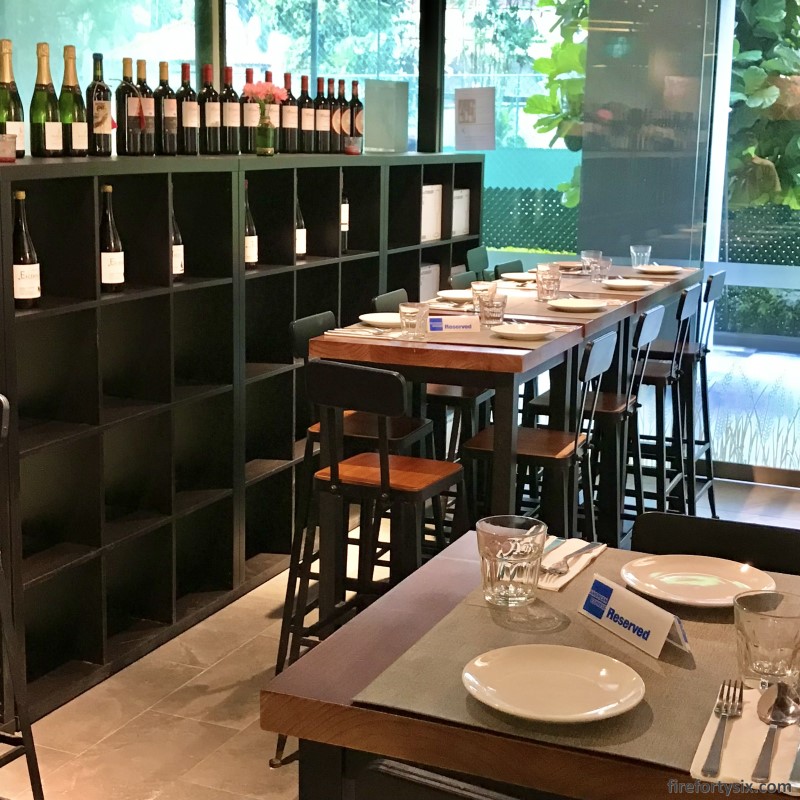
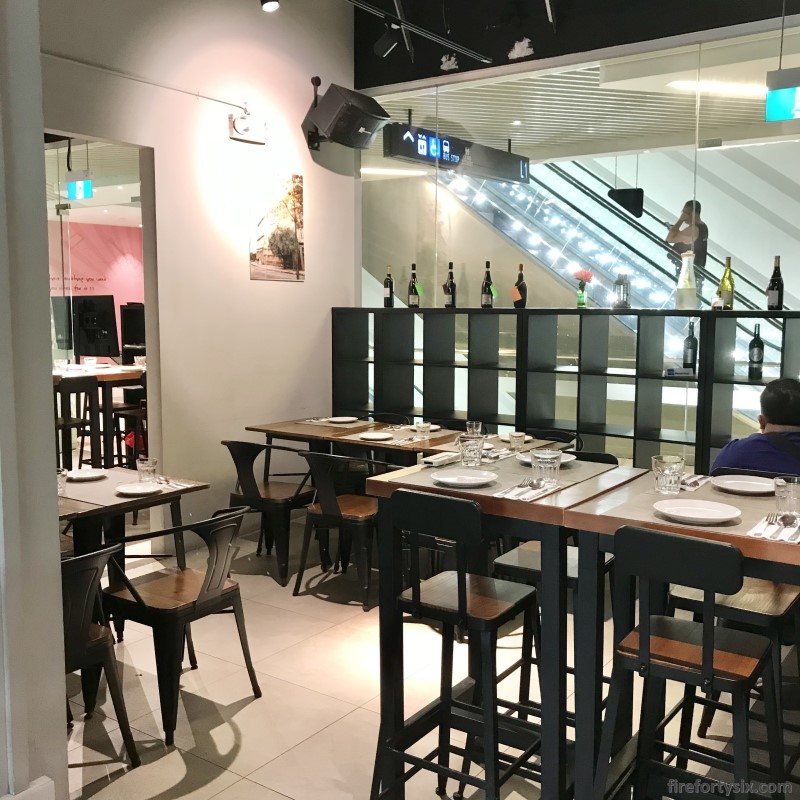
It was small venue, with only around three dozen seats, split between high and low tables. Even then, it would be impossible for one person to cope. Thankfully, his staff started to slowly trickle in.
With additional manpower sharing the load, Chef Tiago was able to spend some time chatting with us. I shared our Macau pork chop bun experience, and asked if it was a representative Portuguese dish.
He gave me a weird look, followed by a kind smile and replied emphatically: “Eh… No.”
Menu
Chef Tiago then went through the menu line-by-line, describing each item in great detail. For each dish, he pointed out ingredients and cooking methods that were traditionally Portuguese and highlighted areas where he had added his own touch.
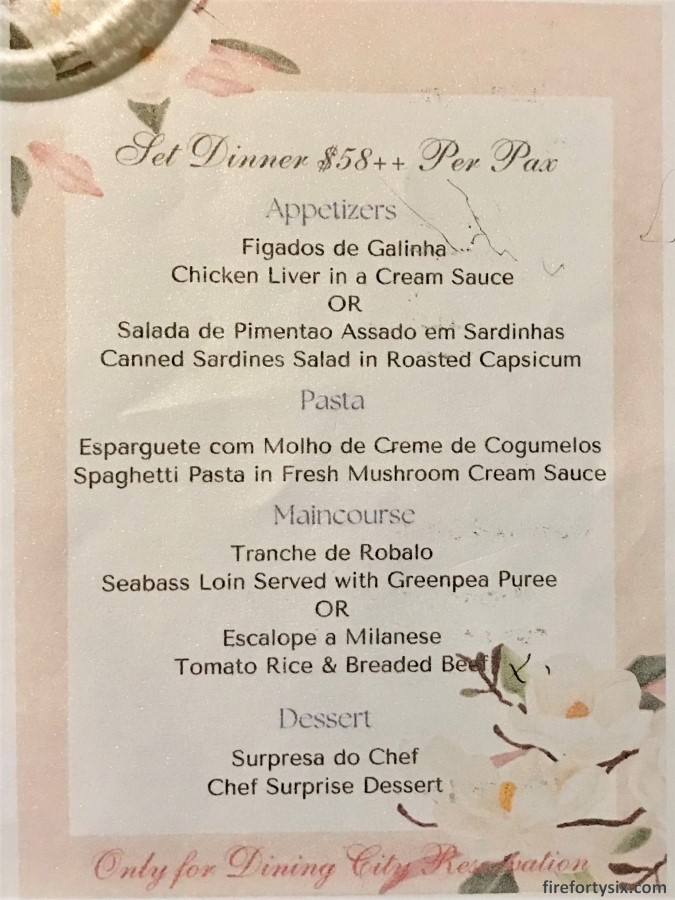
For example, chicken livers are a typical ingredient in Portugal, but the special cream sauce was something he had perfected over decades of experience. Whereas the canned sardines salad was a common dish throughout his home country.
We were curious about the “Chef Surprise Dessert” and asked if it was going to be Portuguese egg tarts. He replied that the surprise was that the name of the dessert is actually “surprise”, something that he learnt to make when he first started his culinary journey.
Given that there were two choices each for the appetisers and mains, we told him that we’d have one of each, allowing us to sample everything on his special menu.
Wine
To complete the experience, I decided to order a glass each of their house white and red wines, both of which were from Portugal. I also flipped through their wine list to the Portuguese section and noticed that their bottles were reasonably priced by Singapore standards.
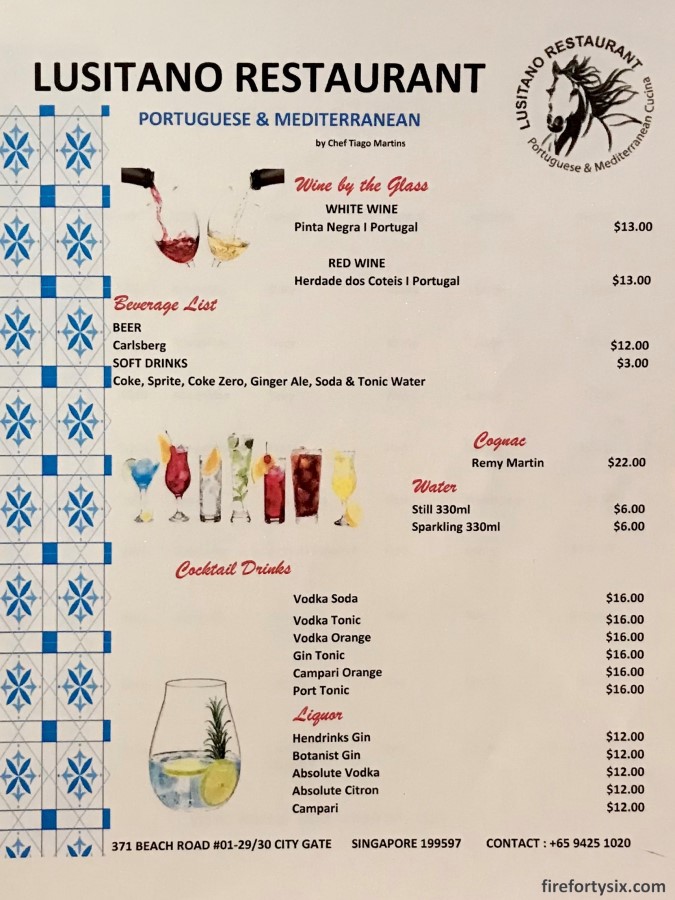
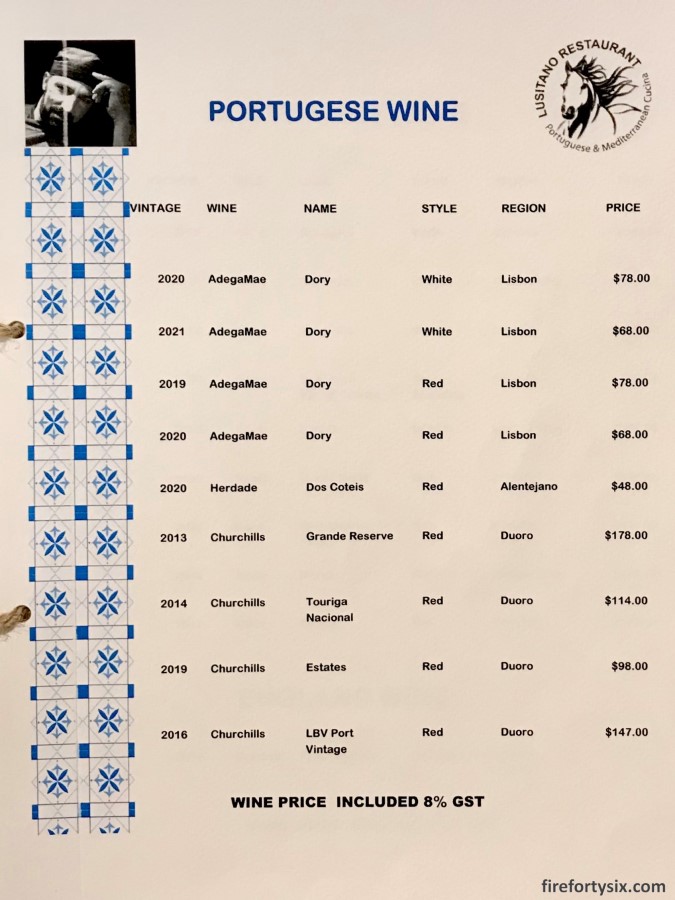
When the glasses were poured, we took a small sip of each before our food arrived. The white Pinta Negra was cold, crisp and full-bodied. It had bright acidity and felt like it would easily stand up to strong-flavoured dishes.
The red Herdade dos Coteis was similarly full-bodied and sported a dark ruby colour. It was quite fruit forward on the palate but with a relatively mellow finish.
Both The Wife and I really liked it, and at S$48 per bottle, it was definitely value-for-money. I was sorely tempted to order a bottle then-and-there, but decided on just another glass instead.

Appetisers
We didn’t have to wait long before our appetisers were served. The Salada de Pimentao Assado em Sardinhas was served cold, with canned sardine fillets sitting atop generous chunks of roasted capsicum.
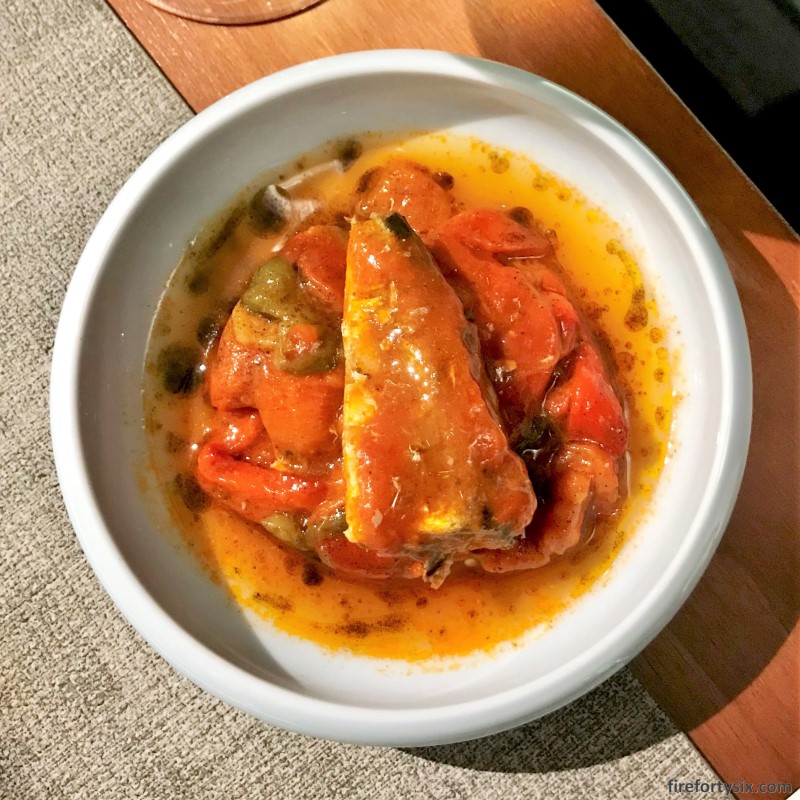
It was very tart and immediately opened up my palate, triggering a tsunami of saliva production in my mouth. And it paired really well with the white wine, which held up really well to the onslaught.
The Figados de Galinha stood on the other end of the flavour spectrum, with a complex and creamy sauce enveloping nuggets of chicken liver. It could have easily become too cloyingly rich, except for an underlying acidity in the sauce, which gave it a surprising lightness.
We thought that the white wine would go well with this dish, but surprisingly it didn’t. Instead, the red wine turned out to be the better partner.
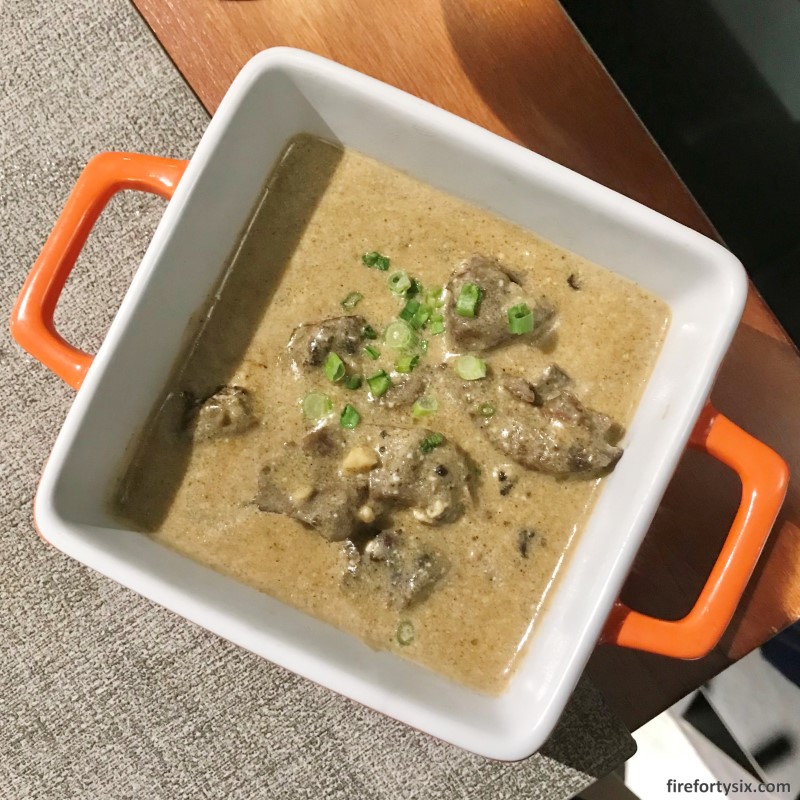
I had expected the appetisers to slowly ease us into the meal, but instead they started things off with a bang. Judging from the robustness of the first two dishes, I could already tell that Chef Tiago wasn’t going to pull any punches.
The only issue I had was that the chicken liver appetiser was not accompanied by some form of bread, which would have acted as a perfect sponge for the sauce.
It didn’t stop me from scooping up and drinking every last drop though.
Pasta
Our second course was the Esparguete com Molho de Creme de Cogumelos. It came in a generous portion, which I thought we’d be sharing. Instead, we were each served our own plate of the pasta.
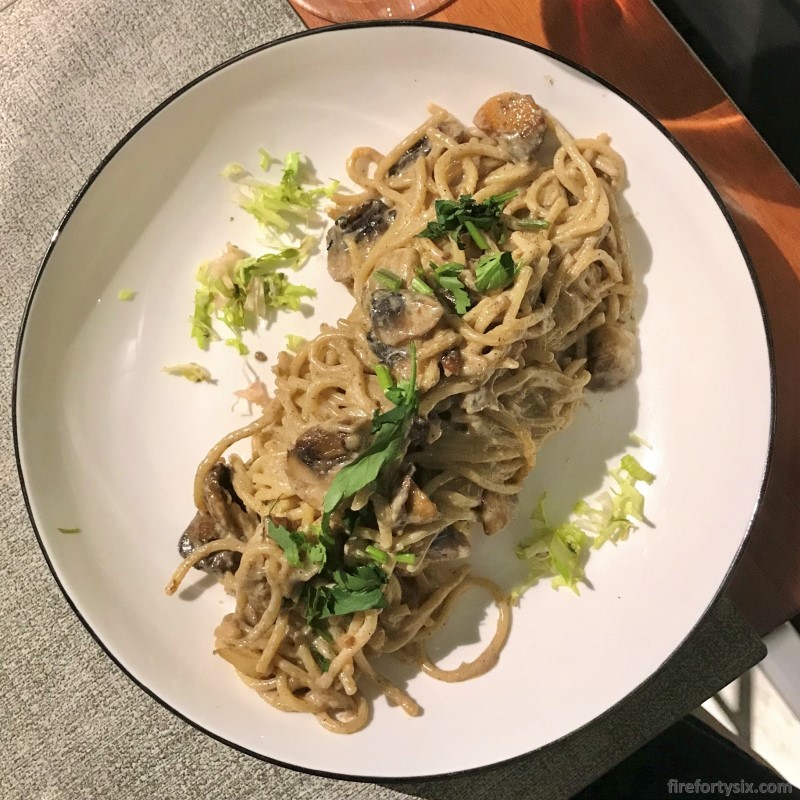
There was a nuttiness to the noodles that I really enjoyed. For some reason, it reminded me of Japanese soba made from buckwheat flour. The sauce tasted similar to that used in the chicken liver appetiser, but with the acidity being replaced by a heavy slug of black pepper.
Mains
Just as we thought that we’d get a breather, our mains arrived. Again, the large portions felt like they were meant to be shared. The Tranche de Robalo featured a meaty chunk of pepper-crusted seabass which was cooked just right.
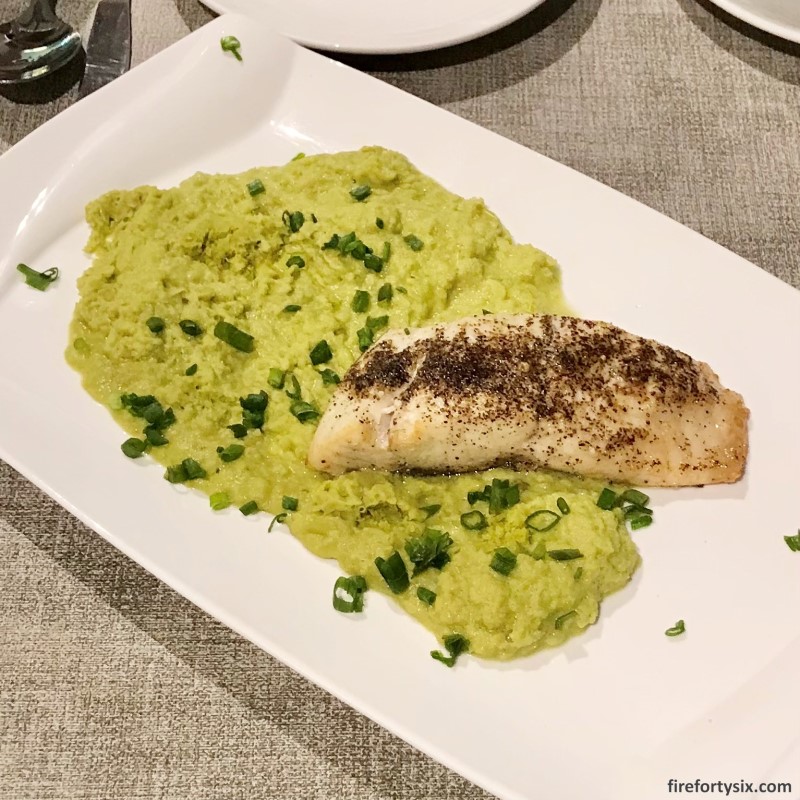

It could have been served with way less puree though, and none of the chopped spring onion. I’m normally a spring onion fan, but it made the puree taste weird somehow. A drizzle of extra virgin olive oil would probably have been better.
But the fish itself was extraordinarily good. I normally associate seabass with average quality, but the loin that was served was anything but average. The firm texture and deep taste felt like it could have possibly been dry-aged to concentrate its flavour.
The Escalope a Milanese with Tomato Rice could have been a full meal in itself, with a big slice of breaded fried beef and mini cocotte of tomato rice. Although the beef was slightly dry, it had a deep flavour that became beefier the more you chewed.

The Wife especially liked the tomato rice, and commented that it looked and tasted like something that she would have cooked at home. I could tell from the look on her face that she was already thinking about the recipe.
Dessert
By the time we finished our mains, we were already quite stuffed. We still had to conquer the Surpresa do Chef dessert and unfortunately, but not surprisingly, it came in a large glass.
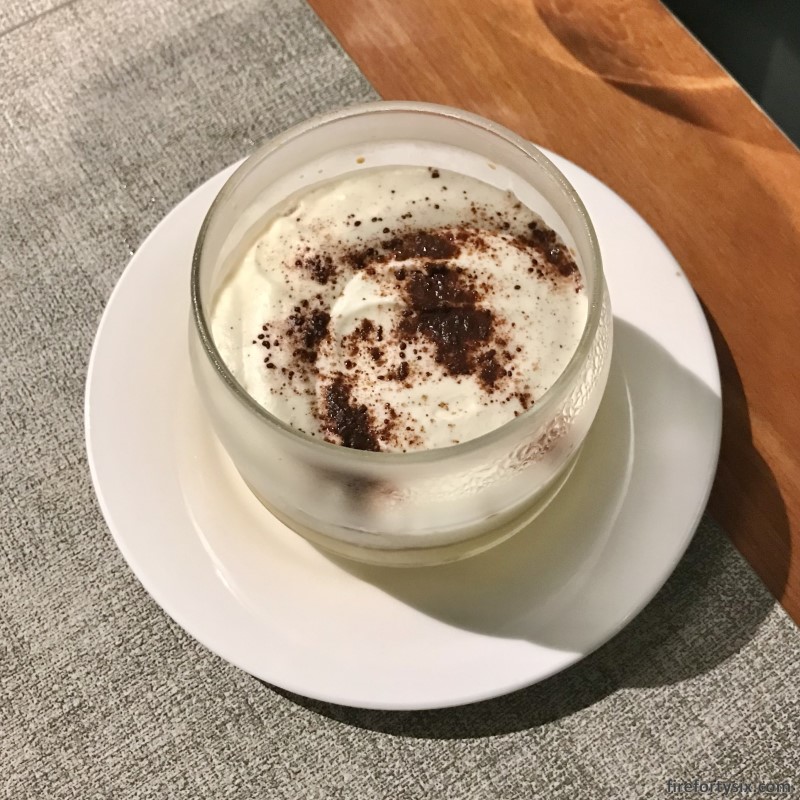

It tasted surprisingly like a tiramisu, except with an added bottom layer of what appeared to be chilled condensed milk. This dessert alone probably made us exceed our recommended daily allowance of sugar by more than five times.
I used to have a really sweet tooth, but I would have struggled even during my heyday.
Encore
We were in a food coma for a while, but that didn’t stop us from discreetly glancing at what was served to our adjacent table. They were a young couple on a date and were ordering off the ala carte menu.
Their dishes looked similarly rustic, full-flavoured and generously-portioned. There was a tomato-based fish dish (bacalao perhaps?) with scalloped potatoes that looked especially delicioso.
I know we’re definitely coming back to Lusitano Restaurant, and I know I’m definitely going to order that specific dish, as well as numerous other exotic-sounding items on the menu.
We do, however, need to make sure we bring in sufficient reinforcements next time.
